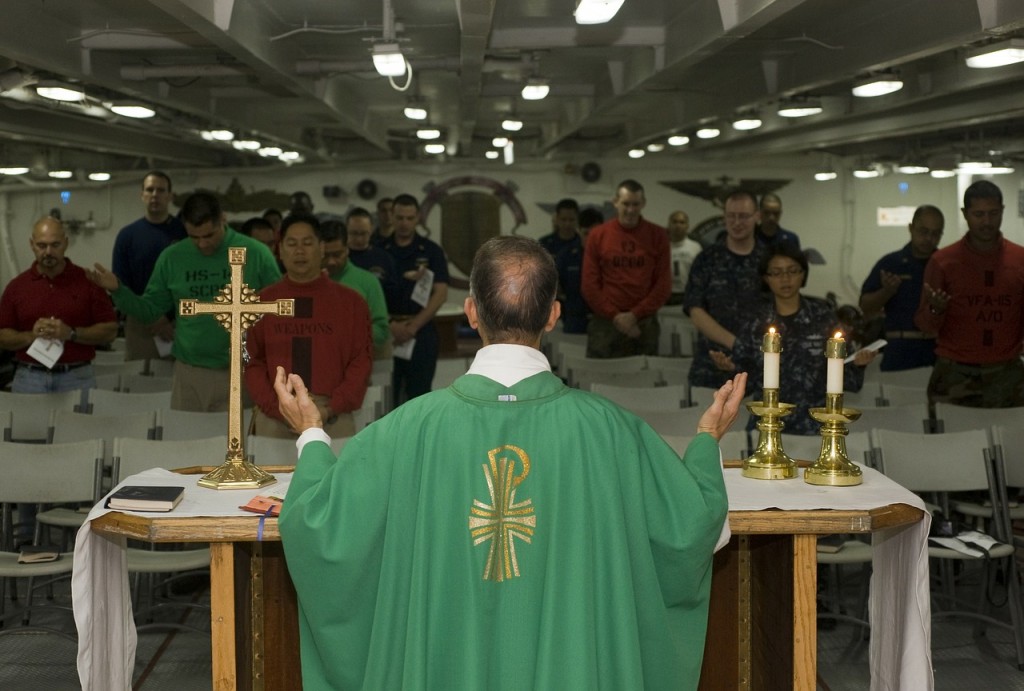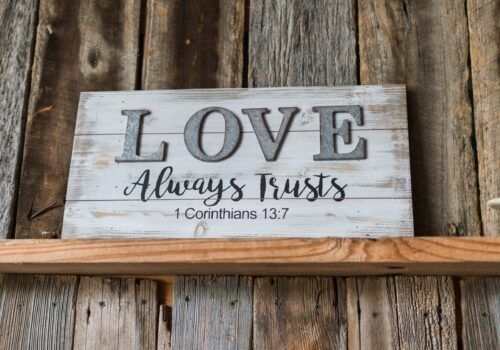Download PDF: Ammermann, Observing the Church
When I accepted a new position at Boston University in 2003, I was told that there was a place in the curriculum they would like me to fill. Since I was their new sociologist, they wanted me to introduce students to what social theories have to say about religion and the role of the church. That’s not unlike what Candler School of Theology had me doing in the 1980s and what sociologists in seminaries had often been asked to do. In the earliest days, seminary sociologists often had a social gospel agenda (how to help Christians address the social needs of the world), mixed with an organizational management portfolio (how to apply scientific theories for successful church growth). But in the 1960s and beyond, the primary narrative thread of what sociologists were telling religious leaders went something like this: “Once upon a time, the church had ultimate authority in the world and wove a sacred canopy under which all of life had a taken-for-granted order. Then the Enlightenment made religious belief problematic, and Protestant individualism made each person her own religious authority. The best the Church can hope for now is proclaiming very contingent beliefs, establishing its value as a moral teacher and community citizen, and perhaps attempting to be an agent of social liberation.” Theologians, I might add, believed us, and much of liberal theology seemed to focus on how to make belief plausible to secular ears. By the time I left Emory in 1995, that secularization story was no longer one I was willing to tell. It was certainly not one I wanted to pick up again eight years later.
The kind of social science I wanted to introduce to seminarians was one honed by my eight years of teaching in Hartford Seminary’s Doctor of Ministry program and doing research on local congregations. I had become convinced that amazing everyday religious work was happening in those local congregations, but also convinced that leading change could be a minefield that few seminarians were ready to traverse. Leading a vital congregation able to respond adaptively to today’s constant challenges would require skills of cultural discernment—both to understand the way the congregation itself was knit together and to understand the potential place of that congregation in an “ecology” of people and institutions and needs in the world it inhabits.
One of the things I learned in teaching Doctor of Ministry students is that this kind of learning happens most effectively when there are real questions at stake in a real place. It happened best for those students who were also working ministers with enough experience in their congregations to know some of the issues, but who also could benefit from a new and disciplined examination of them. Seminarians rarely have that kind of longer-term engagement in a place, but most of them have or can establish some sort of ongoing connection, so that’s how this new class would be grounded. Each student would identify a place of ministry as their observation and conversation point for the semester. Every assignment would require taking the life of that place into account. The course would allow students to practice skills of pastoral observation and learn to identify the social and cultural dynamics within which ministry is practiced.
Learning in this class, then, was intended to take place in the interaction of three forms of knowledge. First is precisely this grounded observational knowledge of a particular place. Second is the wisdom that comes through analysis of the findings of other research in other places and times. And third is the conceptual and theological work of finding ways to think and talk about what we see in the social world. This last, “theoretical” work would draw on both the theories of sociologists about the nature of the social world and the theories of theologians who have thought about what the life of the church in the world is and can be.
Gaining Observational Knowledge
Knowledge that comes to us directly from our own senses requires, of course, learning some specific ethnographic skills for listening, focusing, and organizing what we see. Observing is not simply a matter of hanging out for a while and then making pronouncements. Ethnography involves the discipline of thinking about who we listen to and why and what events and interactions may be most revealing of cultural patterns. It teaches us to take notes and be patient. It teaches us to be aware of the unspoken assumptions as much as of the spoken edicts. It invites going into the spaces we usually ignore and talking to people who are not on the top of the social register. Ethnography invites treating religious communities as if one is, on one hand, a stranger seeing what everyone else has come to take for granted, and, on the other hand, an intimate friend trusted with the stories of “who we are” and the tales of past crises that have shaped the present. Ethnography depends on being intentional about that “in-between” stance and self-reflective about the real human engagement out of which knowledge emerges.
In the context of a semester’s class, one can only begin to learn how ethnography might shape one’s pastoral practice. No student can produce a full-blown account of the culture of a place in four months—during which this will, by no means, be that student’s full-time occupation. Assignments in this sort of class, of necessity, must be more like appetizers than a full meal. One of the difficulties of teaching the course was helping students to manage the practicalities of planning and executing a range of “real life” assignments. Unlike books in the library, individuals and groups are not predictably where they are supposed to be, readily available to be pulled off the shelf at the last moment. Still, the benefit of grounded learning seems to me to justify the difficulties. Each assignment served both the pedagogical purpose of practicing an observational skill and the substantive purpose of discovering the deep embedding of religious life in the social world. The specific data gathering assignments I designed are included in the appendix to this essay. The observational skills for each of them depended on background reading from Studying Congregations: A New Handbook,1 as well as in-class discussion and preparation.
Because there were choices built into most of the assignments, students ended up practicing a fairly broad array of observational techniques.
- All of them ventured into available census data after an orientation that resembled a “stump the professor” session. With a live connection to “American Factfinder”2 on the screen, students called out places to explore and demographic questions to ask. The exercise began to demonstrate the possible things one can learn with widely-available public data, but the class ended with a discussion of why a religious leader should care. As with each observational assignment, the point was not simply the data, but what that information suggests about the needs and resources for doing the work of ministry in the world.
- Later in the semester they were challenged to put more flesh on the “factoids” they discovered in the census, learning what the numbers can and can’t tell them about the community context in which they are doing their work. Many issues that concern religious leaders in the world have been the subject of concerted study by agencies and commissions and journalists in most communities, and the staffs of those organizations are often fonts of long-term wisdom. Gathering that wisdom is not only substantively useful, but it also instills valuable experiences of sharing concerns for human flourishing with potential community partners.
- Some students also experimented with the art of leading a small focus group, either in a time line exercise or an artifacts inventory. They had to think about representing a range of experience in the group they gathered, being aware of what kinds of knowledge different kinds of people would bring. They had to think about how to set the stage and encourage the kind of conversation that would be informative. They had to confront practical questions like how to record what happens. And they got a glimpse of the potential pastoral benefits of this sort of collective story sharing.
- Others tried out the role of participant observer at a worship service or similar event. They were challenged to look for how people participate, not just what the pastor said. They were challenged to pay attention to space and bodily experience, as well as words, and to ask what their own emotional experience told them. One of the biggest obstacles was often getting past the order of service and the pulpit to see what the non-leaders were doing and what the non-order was in the service. They also learned the discipline of doing “jottings” in the midst of the event, writing up fuller notes soon thereafter, and returning to reflect on their notes still later.
- The art of interviewing was emphasized in more than one assignment. Of course, I encouraged them to be clear and focused in what they sought to find out, but also to be flexible and open to what might emerge. I hoped that they would discover that interviewing can also be a time of pastoral listening.3Ethnographers talk to people to learn from them about the meanings that give shape to actions and attachments. Wise pastors, as well, need to listen for the stories that are paradigmatic tales—times when things changed, when we saw God at work, when we saw ourselves at our best or our worst.
In each of these forms of direct observational knowledge gathering, students were encouraged to plan ahead so as to learn as much as possible, to be fully present to the experience and the people, to keep good notes and records to work with after the fact, and to look for the cultural and theological patterns in what they were observing.
Enlarging the Imagination through Reading
The second kind of wisdom being sought in a class like this is the wisdom of other observers in other times and places—sociological researchers, as well as pastoral observers. Thinking about the difficulty of getting young adults to come to church, for instance, becomes a bit more understandable in the larger cultural, economic, and demographic context that sociologist Robert Wuthnow outlines in After the Baby Boomers.4 Thinking about the challenges of supporting immigrant families and incorporating immigrant culture into the life of a worshipping community comes alive in conversation with Fr. Chuck Dahm’s (OP) Parish Ministry in a Hispanic Community.5 Each keeps the questions of everyday life and the questions of faith vividly in conversation with each other and invites readers to do the same.
The sad reality is that not all sociological research is useful. As some theologians like to complain, a great deal of work has been so skewed by assumptions about secularization or by crass market analysis that it holds little wisdom for a pastoral leader. But there is a great deal out there that takes readers deeply into the religious life of communities not otherwise accessible or familiar, allowing students to imagine how religious life is expressed in modes other than their own. There are also studies that help to uncover the dynamics of race and gender and class and nationalism in the taken-for-granted patterns of religious life. By standing in the shoes of the researcher and by learning to ask the kinds of questions that sociologists ask, students gain a new interpretive lens for what they observe. It doesn’t replace the theological lens, but it does complicate it.
Finding Interpretive Ground from which to Work
Learning to ask cultural and theological questions came in part through reading and in part through the very dilemmas that emerged in students’ own observations. What does it mean for an African American church to contemplate incorporating Anglos and Hispanics and Asians? Not just how might it happen, but why? What does encountering Dahm’s discussion of Chicago Mexican culture have to say to Greeks in the Orthodox Christian community of Boston? What theological principles help a leader discern where the good gift of culture becomes the instrument of exclusion? In a religious tradition that values strong fatherly leadership, is the virtue of inclusive participation worth pursuing? When is the deeply sacred beauty of a sanctuary a hindrance more than a help? Those were all questions that emerged from the life of the communities my students were observing.
These are immanently practical questions about how a group survives and meets this-worldly challenges. They are questions for which careful observation and searching of previous research can prove critically useful. But they are also ultimately not questions a sociologist can answer, at least not with empirical data alone. These are questions that demand that religious leaders find a place to stand. They require an ecclesiology that is in dialogue with the ethnography. They demand a theological vision of God’s reign and a willingness to enter into conversation with a particular people about how they together have been and will be part of that reign. As theologians have moved in the direction of putting ecclesiology and ethnography in dialogue,6 it seems to me that classes like this are both vital training grounds and creative sources of the sorts of observational wisdom out of which local leaders and future theologians alike will build up knowledge about the life of the church in the world.
Appendix: Observational Assignments
This course is intended to be grounded in your own particular experience of ministry. Your first assignment is to identify a setting that will be your focus for the semester. You may have an assigned role there, or it may simply be a place with which you are familiar. It should be a site where we typically recognize “ministry” to be taking place, but that can mean anything from a service agency to a denominational office, from a congregation to a hospital.
In any case, it should be a place to which you have ready access, and you should talk with someone who has authority there to obtain permission to use the site in your learning this semester. If you should write about any individual from the site in any of your assignments, you should identify that person only by initials or a pseudonym. It is important to protect the confidentiality of those you observe.
By September 9, you should have settled on a site and made your arrangements. Because the assignments will require some advance planning, you should be able to provide at least tentative descriptions of your plans for them by September 23.
Assignments
#1. Using Census Data. Due September 30. Every religious organization occupies a geographic place, even if that place is not its primary focus of ministry. Geography and demography matter. The U.S. Census is a treasure trove of information about the cities and towns where we work, and it is accessible to everyone via the web—www.census.gov. Click on “American Factfinder” from the homepage, and then use the “fact sheet” utility. Select the area in which your observation site is located. Depending on where it is, you may have the option of getting information on a more or less precise geographic area (the county vs. the city vs. the zip code, for instance—be as precise as you think will be helpful). Do some exploring through the general and social characteristics. Maybe even look at some of the maps. Make notes on some of the more interesting things you discover.
Your report should begin by identifying the area that is your focus and why you decided to define the geography as you did (why just the census tract vs. the whole town vs. the entire metro region vs. the persons of a particular national origin, for instance). Then provide at least five “factoids” about the area/group (no more than 1 page total). For each factoid describe very briefly why you think it is important for understanding the place you are observing. Make copies of the pages from the Census you are using and attach those copies to your write-up.
Sample factoid: 19.1% of the people in my zip code speak a language other than English at home (for only 3.7% is that language Spanish), and 16.6% are “foreign born.” This would seem to be significant for ministry in my area in that a fair number of people may need English as a Second Language classes or other assistance in adjusting to the U.S. It might also mean that we could have a great time with “ethnic heritage” celebrations and delicious church potlucks!
#2. Observing the culture of a religious community. Due October 21. Choose ONE of the following as your means of gathering data about the culture of the setting you are observing. In each case, you will draw on the guidelines from Studying Congregationsfor methodological guidance.
- Do a “Time Line Exercise.” Gather a small focus group to explore the history of the congregation (or other setting).
- Do an “artifacts inventory” with a small group. Ask them to recall one or more significant places in the group’s building. Then ask them to list as many physical artifacts as they can remember, noting those they would most miss if they were to disappear and relating any stories associated with the places and items they name. (Alternatively, walk with them through the space, asking them to tell stories along the way.)
- Be a participant observer at a significant ritual event for which you do not have leadership responsibilities.
Whichever means you choose, think carefully about how to record your observations (jotting notes and/or tape recording). Be sure to review and supplement your notes as soon as possible after the event. Attach your notes to your write-up.
Your report should provide a 2-3 page summary highlighting what you heard and observed. As you look at your notes, look for one or two themes that can tie things together (e.g., “we’re a community church” or “we’re a family” or “everything’s changing”) and then illustrate those themes with specific things you observed. You should begin with a paragraph introducing the setting you are studying. Where you can, you should also make connections with your reading.
#3. Interview an Insider. Due November 18. Select a person who is likely to know a lot about how this organization works—what people care about, how they organize and make decisions, how they get things done. Make a date with that person and interview them about their experience in the congregation (or agency). Draw on your reading and ideas from class to design a set of questions that will allow you to explore “process” issues such as forms of authority, how change is managed, and the like.
Your report should provide a 2-3 page summary of what you learned. Again, organize your report around 2-3 themes in what you heard (the importance of longevity, for instance, or efforts at inclusiveness, or the power of the pastor). Organize your report around those themes, but draw in ideas and examples from reading and from class, as you are able. Attach your interview questions to your report.
#4. Exploring the Context. Due December 4. Knowing what you now know about how this organization thinks about the “community” with which it is engaged, focus on one relevant community issue and gather additional information you think is important to their engagement with their neighborhood or the world. The issue you choose might be something as local as street crime or drugs in the schools or as global as the environment or immigration. Decide on at least one way you might learn more about that issue. You may use any one or a combination of a) observation in the community, b) interview(s) with community leaders, c) reading news reports or d) finding a significant public research report or policy statement. The object here is for you to learn something about the social world of your organization that will be informative as they think about their ministry.
Your report should provide a 2-3 page summary of what you have learned, describing briefly where you looked for information and suggesting briefly the implications for your place of ministry. Again, draw in ideas from your reading and from class as you are able.
Notes
- Nancy T. Ammerman, Jackson W. Carroll, Carl S. Dudley, and William McKinney, eds., Studying Congregations: A New Handbook(Nashville: Abingdon, 1998).
- U.S. Census Bureau, “American Factfinder,” 2012, Department of Commerce, http://factfinder2.census.gov/faces/nav/jsf/pages/index.xhtml(accessed February 7, 2013).
- For an extended reflection on how this sort of research discipline can be deployed in pastoral practice, see Mary Clark Moschella, Ethnography as a Pastoral Practice(New York: Pilgrim Press, 2008).
- Robert Wuthnow, After the Baby Boomers: How Twenty- and Thirty-Somethings Are Shaping the Future of American Religion(Princeton: Princeton University Press, 2007).
- Charles W. Dahm, OP, Parish Ministry in a Hispanic Community(Mahwah, NJ: Paulist Press, 2004).
- See, for example, Ecclesiology and Ethnography Network, Ecclesiology and Ethnography Blog, http://ecclesiologyandethnography.wordpress.com/(accessed February 7, 2012).






